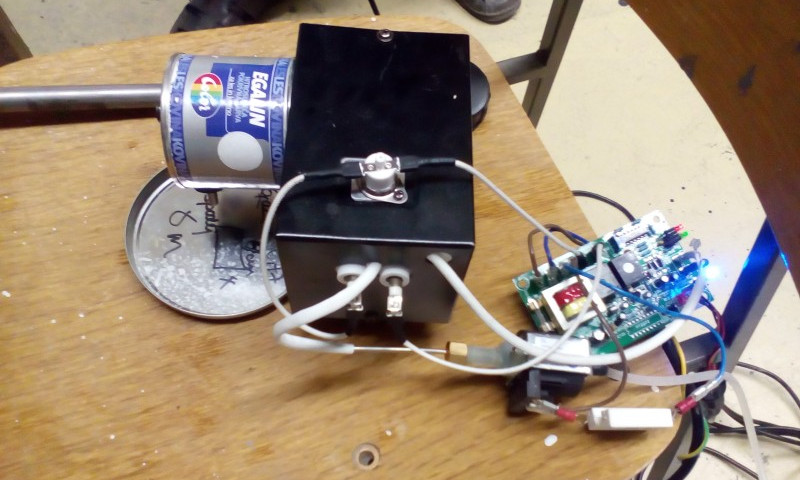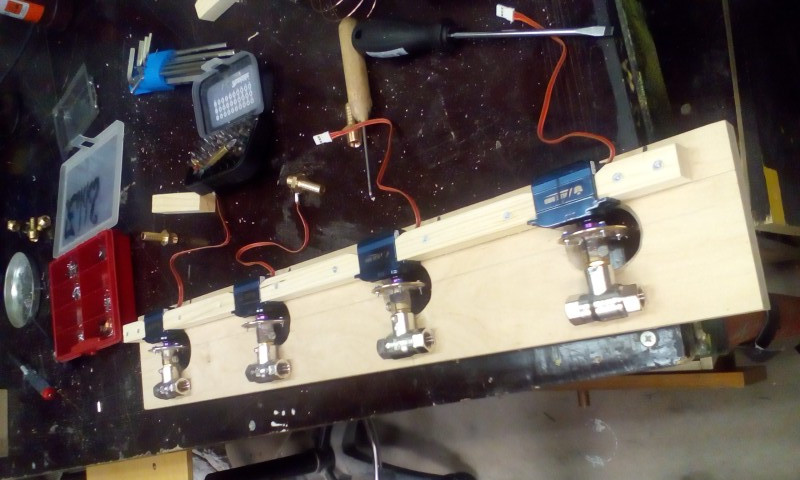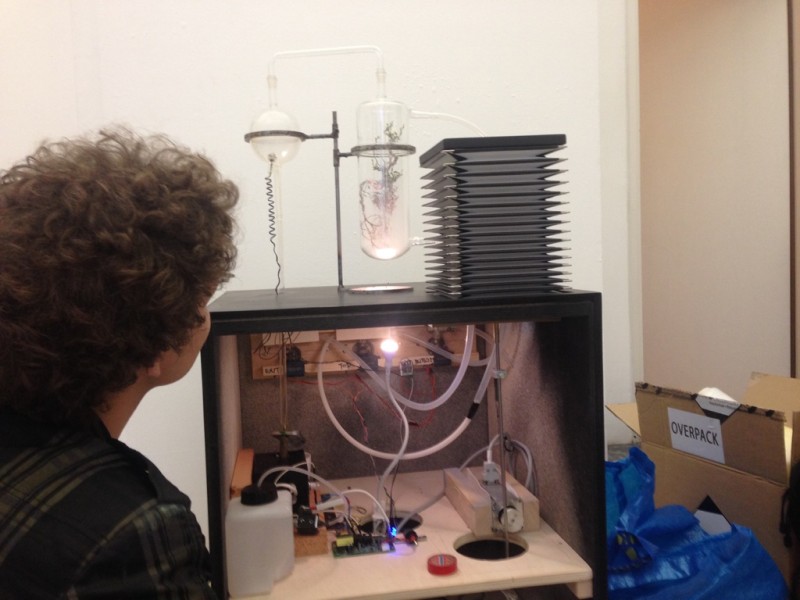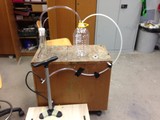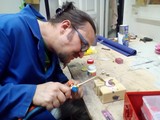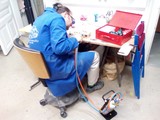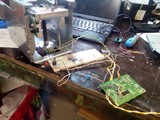Glassworks #1
Category: Inventions
Collaborators: Urša Vidic, Zoran Srdić Janežič

A tree enclosed in a glass bottle, with fog periodically filling and vacating the bottle, conjuring up images of misty mountains in China where the immortals live. Glassworks #1 was an independent project by Urša Vidic for the 2016 edition of Svetlobna gverila lights festival in Ljubljana. I got involved because I agreed to participate in V zavetrju časa where this piece also appeared.
The author of the project was . I was tasked with doing automatisation as usual, with Zoran being responsible for mechanical construction. Urša’s idea was to somehow generate fog and pump it around with help of valves and bellows. The bellows were given a prominient position, being out in the open so that the audience can see it moving up and down when the fog moves around.
The problem of fog generation was solved by using a fog machine. It was disassembled and extensively modified. This part was perhaps the most rewarding one for me personally, as I really enjoyed making such extensive changes with surgical precision and getting the machine to work.
For one thing, the nozzle had to be replaced so that the fog was not spread out, but instead was lead through a narrow pipe to the right chamber within the glassworks. Also, the machine had to be modified to generate the right amount of fog. This was done by adding a resistor in series with the pump within the machine, so that the pump received less power.
Also, the fog generation was to be periodic and automatic. For this the push button that the machine came with was changed to transistor operated electronic switch that could be triggered from the control electronics automatically.
When the fog was generated at the right amount at the right time, we moved to the problem of directing its flow around the piping. After multiple dead ends involving using industrial electrically triggered valves and trying to construct our own, we settled to use manual valves with hobby servos attached to them. While this setup was rather complex for simply opening and closing something, it had the important characteristic of actually working.
The initial plan has four valves for moving the fog around. However, the fog turned out to behave a little different than expected, and in the end only one of the valves was used, the others being either unnecessary or not doing what they were supposed to do. Which in a sense was a good thing, because it made the whole setup simpler.
Of course fog does not move anywhere by simply opening and closing valves. As previously stated, the movement was achieved by use of bellows, which were of the kind originally intended for an accordion. For automatisation, a linear actuator was constructed and fitted to an industrial stepper motor from Festo. This caused some grievances, since by carelessness I managed to destroy the very advanced, very expensive and evidently very delicate controller, also from Festo. This was not the only time this happened either, as I heard that in the follow up project called Glassworks another controller of the same type suffered identical fate. The solution was about 100 times cheaper hobby stepper controller from Pololu, which was not as shiny but surprisingly got the job done without any problem.
As can be expected from a non-trivial system involving electronics, mechanics and fluid flow whose design is based on artist’s imagination, the final device exhibited some curious and unexpected behavior. On the first sight, it looked like the machine was not behaving correctly at its final installed location. Very little fog was actually coming to the main chamber, not veiling the tree inside as it was supposed to do. Except, sometimes it did.
After serious effort trying to fix the problem, it was discovered that the machine was actually running in longer cycles. A beautiful heavy fog formed once in six fill-and-vacate cycles, followed by five cycles with varying lesser amounts of fog.
The cause of the unintended six cycle supercycle was never discovered, with the guesses ranging from heating and cooling cycles of the glass walls to having something to do with the saturation of fog-air mixture within the glass chambers. Personally, I saw the supercycle as a good thing and as a serendipitous discovery, a view that was unfortunately not shared by everybody involved in the project.
After the initial show in Svetlobna Gverila, Glassworks #1 also made an appereance in multi-media spatial installation V zavetrju časa.
